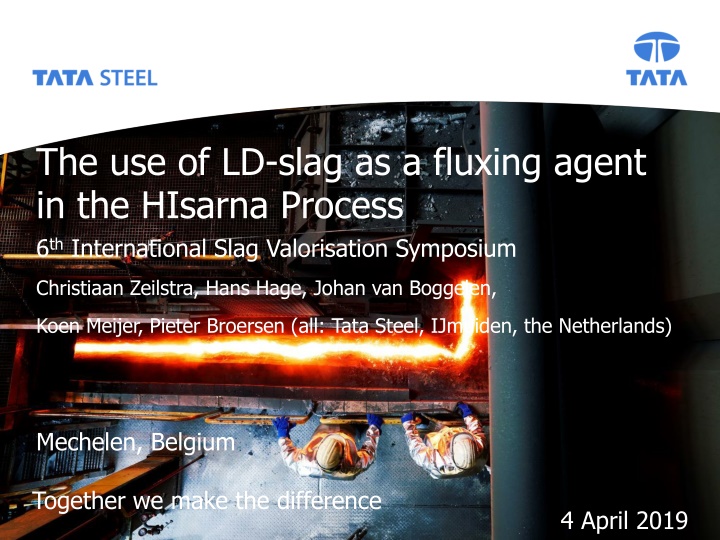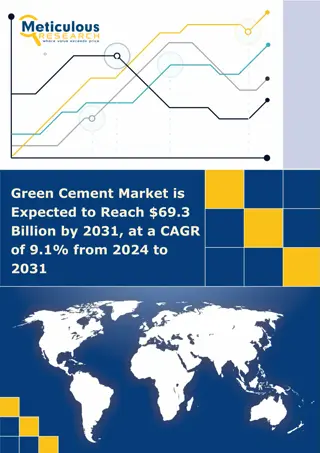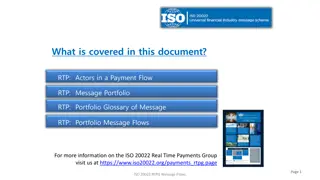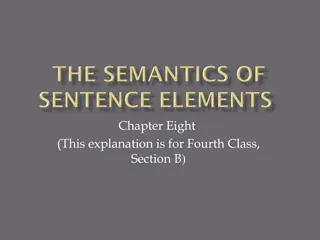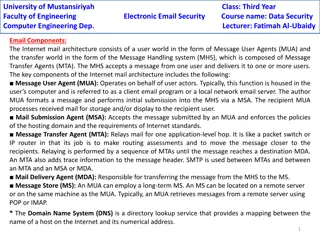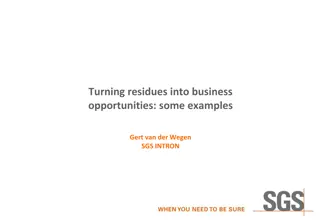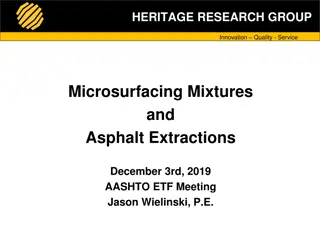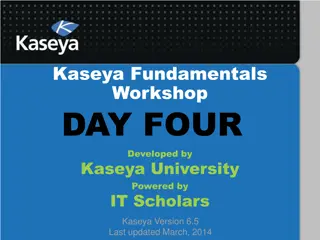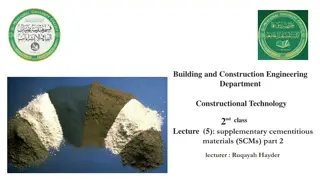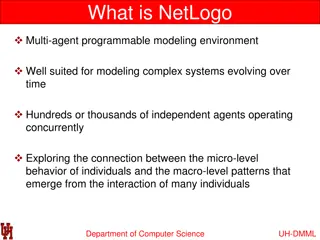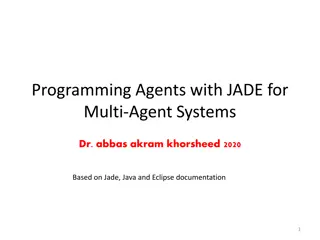The Use of LD-Slag as a Fluxing Agent in the HIsarna Process
"Exploring the innovative HIsarna process for smelting reduction ironmaking, focusing on the utilization of LD-slag as a fluxing agent to reduce CO2 emissions and enhance operational efficiency. Learn about the development, benefits, and comparisons with traditional methods in the steelmaking industry."
Download Presentation

Please find below an Image/Link to download the presentation.
The content on the website is provided AS IS for your information and personal use only. It may not be sold, licensed, or shared on other websites without obtaining consent from the author.If you encounter any issues during the download, it is possible that the publisher has removed the file from their server.
You are allowed to download the files provided on this website for personal or commercial use, subject to the condition that they are used lawfully. All files are the property of their respective owners.
The content on the website is provided AS IS for your information and personal use only. It may not be sold, licensed, or shared on other websites without obtaining consent from the author.
E N D
Presentation Transcript
Presentation title, change View >> Header & Footer The use of LD-slag as a fluxing agent in the HIsarna Process 6th International Slag Valorisation Symposium Christiaan Zeilstra, Hans Hage, Johan van Boggelen, Koen Meijer, Pieter Broersen (all: Tata Steel, IJmuiden, the Netherlands) Mechelen, Belgium Together we make the difference 4 April 2019 1
Content 1. What is HIsarna? 2. Hot metal and slag chemistry 3. Utilisation of LD-slag in HIsarna 4. Conclusions 2
1.1 HIsarna development HIsarna Smelting reduction ironmaking process that can achieve at least 20% reduction in CO2 emission intensity without carbon capture technology (more than 80% possible with CCS). Oxygen based, therefore high CO2 concentrations Game changer technology Reduce CO2 and other emissions No coking or ore agglomeration Flexible raw materials use 3
1.2 HIsarna development In 2004 several European steelmakers proactively started the ULCOS project with the objective to achieve 50 % reduction of the CO2 emissions of steelmaking HIsarna is one of the four process development that originate from the ULCOS project. Since 2007 Tata Steel, Rio Tinto and ULCOS have been active developing this coal-based smelting reduction process. In 2010 a dedicated pilot plant was built at Tata Steel in IJmuiden (NL) To date over 75 mln Euro has been invested in this new technology. The HIsarna process offers a combination of environmental and economical benefits. 4
1.3 Comparison BF route - HIsarna Iron ore Hot metal Coal Coking/Agglomeration Ironmaking Iron ore Hot metal Direct use of fine ores and coal (no agglomeration and coking) Coal Ironmaking 5
1.4. HIsarna process layout Iron ore is injected into the smelt cyclone, together with oxygen. Hot CO rich gas from the SRV is combusted in the smelt cyclone, increasing the temperature and causing the iron to melt and partly pre-reduce. The molten and partly reduced iron ore will form a liquid film along the wall of the cyclone after which it drops down into the slag layer in the SRV. Granular coal is injected in the slag layer. This will fully reduce the iron ore to liquid hot metal and carburise the hot metal bath. The reduction reaction produces CO gas. This is partly combusted with oxygen in the space between the top of the slag and bottom of the cyclone, in order to generate heat. The splash and turbulence resulting from the injection processes ensure part of this heat is transported to the slag and metal bath. Smelt Cyclone SRV #
1.5 HIsarna Benefits HIsarna offers a combination of environmental and economic benefits Environmental benefits Lower CO2emissions Lower emissions SOX, NOX, dioxines and fine dust Minimizing the landfilling of slags and dusts through recycling Economic benefits Ironmaking with low cost raw materials, non-coking coals and low grade ores. Recycling of waste oxides, slags and galvanised scrap Lower steelmaking costs because of low Si, P in hot metal Greenfield developments with much lower CAPEX 7
2.1 Hot metal and slag chemistry HIsarna uses fluxes for getting the right slag chemistry: Limestone - Pre-mix with iron ore Dolomite - Pre-mix with iron ore Burnt lime - Finishing touch Replacing these fluxes with other sources of CaO and MgO: Reduce costs Lower CO2 foot print LD-slag is characterised by: Calcined Containing CaO: ~ 40 %wt B2 basicity ratio: CaO/SiO2 ~ 3 Containing MgO: ~ 7 %wt Containing Fe-units: ~ 18 %wt P2O5: ~ 1.5 %wt 8
2.2 Hot metal and slag chemistry FeOx level in different slags: Blast Furnace: ~ 0.3 %wt HIsarna: ~ 4-5 %wt Steel convertor: ~ 20 %wt FeOx level influences the partition of elements - such as P and Mn over hot metal and slag: Blast furnace HM: P typically 0.05-0.10 % HIsarna HM: P typically 0.02 % Convertor (steel): P typically 0.007-0.02 % (Note that P-levels depend on raw material input) HIsarna slag is better capable of dealing with increased P input than a blast furnace. HIsarna is less effective in S removal than a blast furnace, but this can be done before the steelmaking step 9
3.1 Effect of LD-slag on ore feed fluxing Factsage calculations were performed to assess the melting behaviour of the iron ore in the smelt cyclone. Cases studied: 1. 100 % iron ore; 2. 95.8 % iron ore, 2.5 % limestone and 1.7 % dolomite; 3. 95 % iron ore and 5 % LD-slag. 100 90 Observations: Fluxing of ore: better melting Fluxing with convertor slag should be similar/better as compared to limestone/dolomite. 80 70 Liquid phase [%] 60 50 40 30 20 10 0 1350 1400 1450 Temperature [ C] 1500 1550 1600 Pure ore Ore-Limestone-Dolomite Ore-Convertorslag 10
3.2 HIsarna plant trials using LD-slag A pilot plant trial was performed in order to assess the impact of fluxing with LD-slag: IJmuiden LD-slag was ground/screened to prepare ~ 2000 tons of iron ore / LD-slag blend; This blend was used during ~ 20 days of hot metal production Hot metal and slag chemistry were compared with regular fluxed iron ore (limestone/dolomite) Observations: 1. HIsarna process behaviour/control was unchanged: 1. Control of the smelt cyclone (iron ore injection); 2. Control of the final (tapped) slag chemistry/basicity. 2. Differences in hot metal and slag compositions observed: 1. Increased P and V levels in hot metal and slag, originating from the LD-slag; Limestone / dolomite blend %wt 1.16 Limestone / dolomite blend %wt 4.3 LD slag blend %wt 4.0 LD slag blend %wt 1.19 Hot Metal C Slag B2 [-] S P V Mn 0.082 0.016 0.0079 0.076 0.088 0.025 0.012 0.082 CaO SiO2 MgO Al2O3 38.6 33.2 5.5 12.7 38.2 32.0 5.2 12.5 Si < 0.01 < 0.01 Fetot P2O5 V2O5 3.5 0.11 0.064 3.7 0.22 0.14 Table: Average HIsarna slag and metal compositions for test runs with two different ore feed blends. Note the reported Fetot in the slag is present as FeOx. 11
4. Conclusions / outlook HIsarna is a break-through technology, offering significant environmental and economic benefits. Plant trials were performed: Demonstrating capability of utilising/recycling LD- slag in order to reclaim CaO, MgO and Fe units; Observed that P levels in the hot metal went up, but were still low compared to those of typical blast furnace hot metal. Lower P-levels will reduce costs of steelmaking; Capability of taking increased P input. Further study/testing to be done: Better understand/optimise element partitioning over hot metal and slag, e.g., P, Mn and V; Effects of mineralogical phases of fluxes on melting behaviour of iron ore in the smelt cyclone; More general: investigate the differences between HIsarna slag and blast furnace slag for cement making applications. 12
Acknowledgements HIsarna is being developed together with ArcelorMittal, thyssenkrupp, voestalpine and Paul Wurth. This project has received funding from the European Union s Horizon 2020 research and innovation programme under grant agreement No 654013. 13
